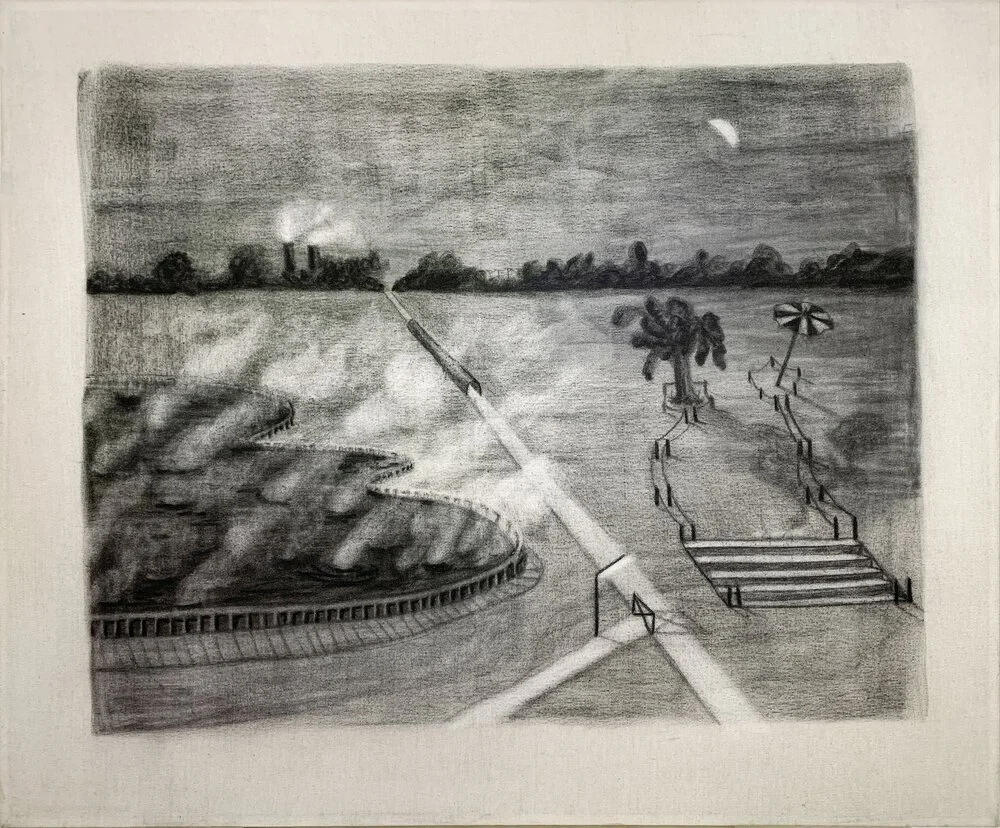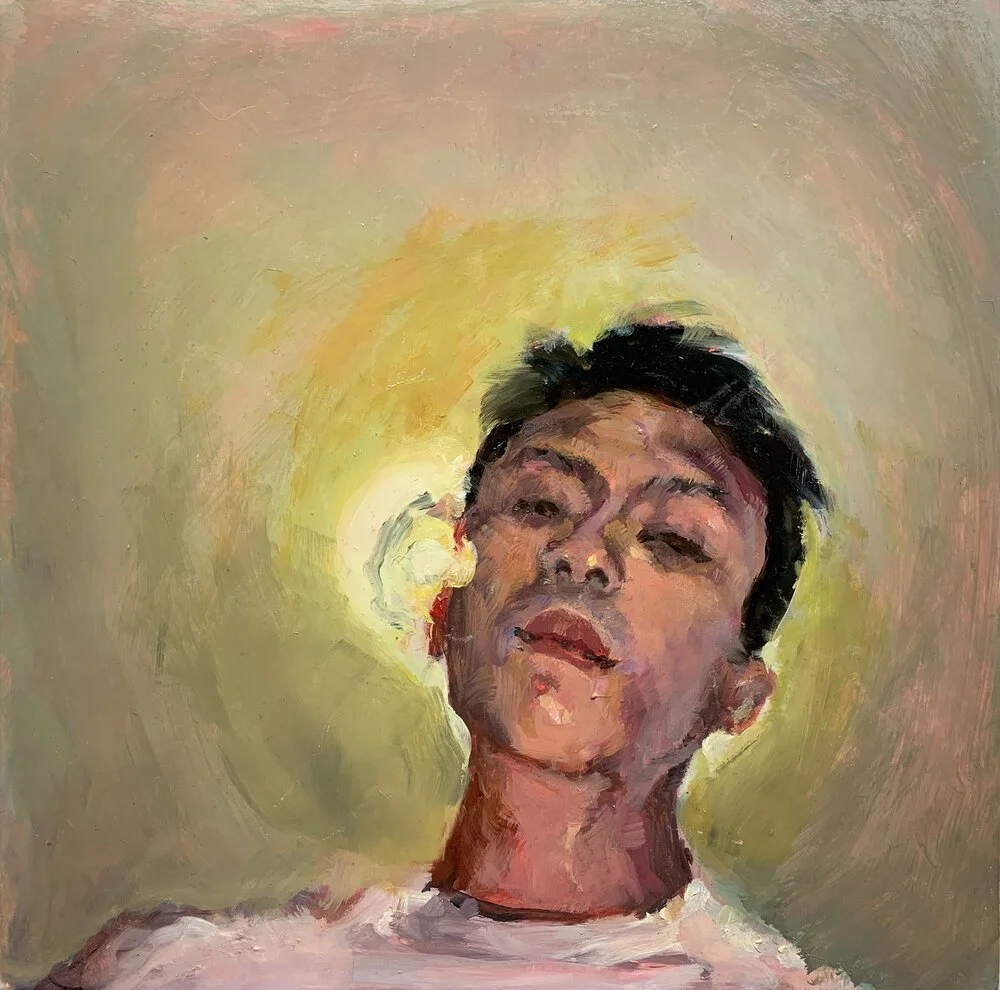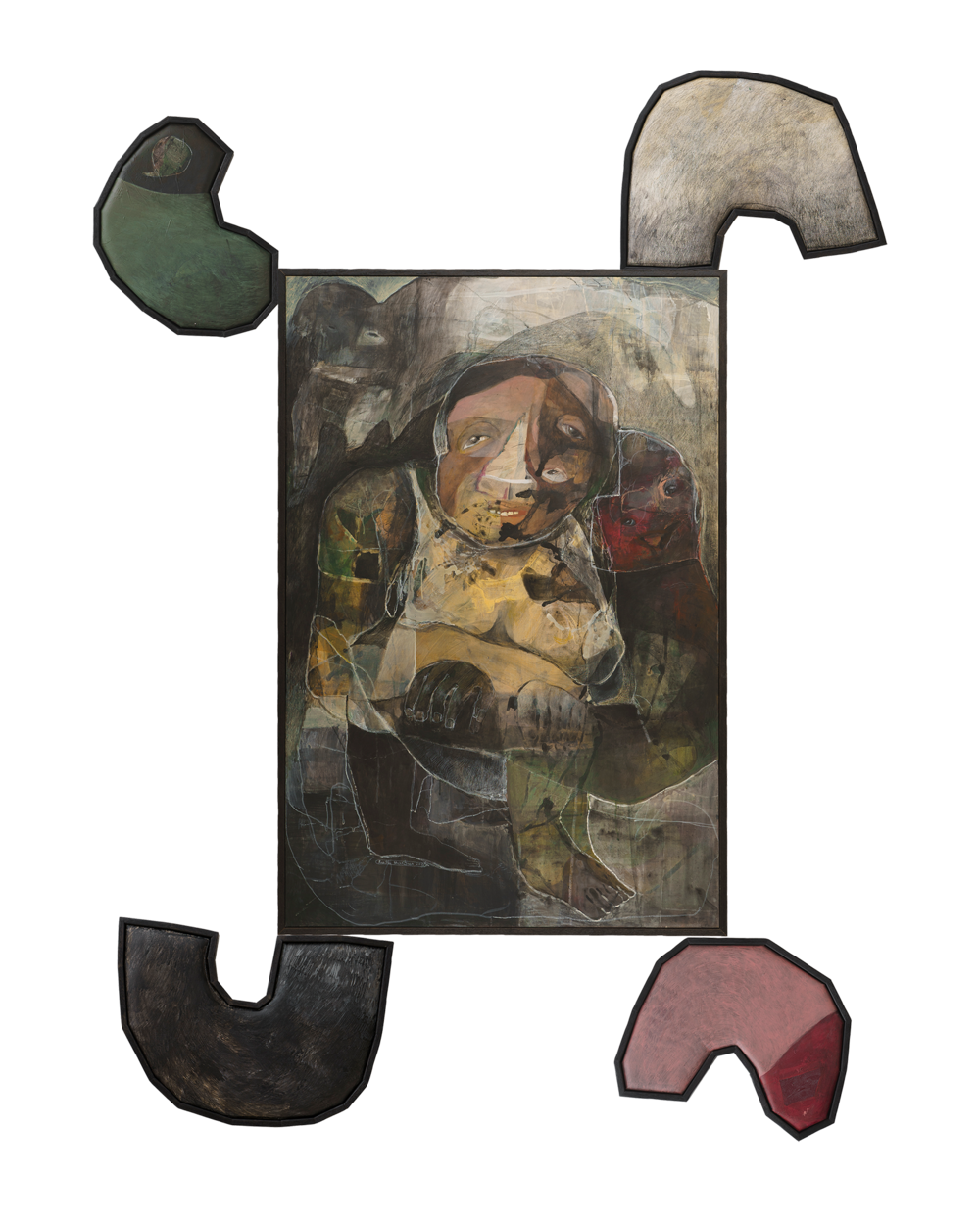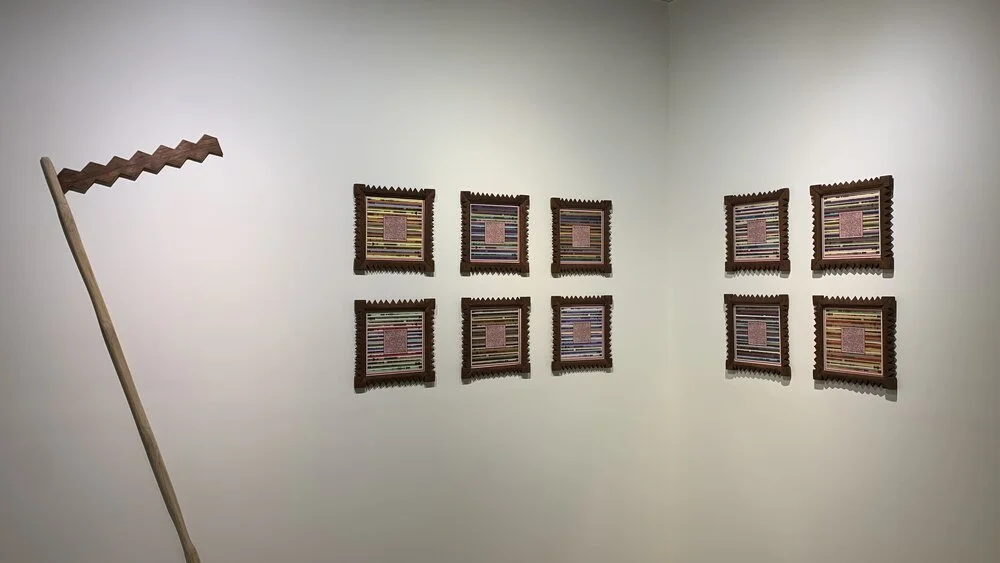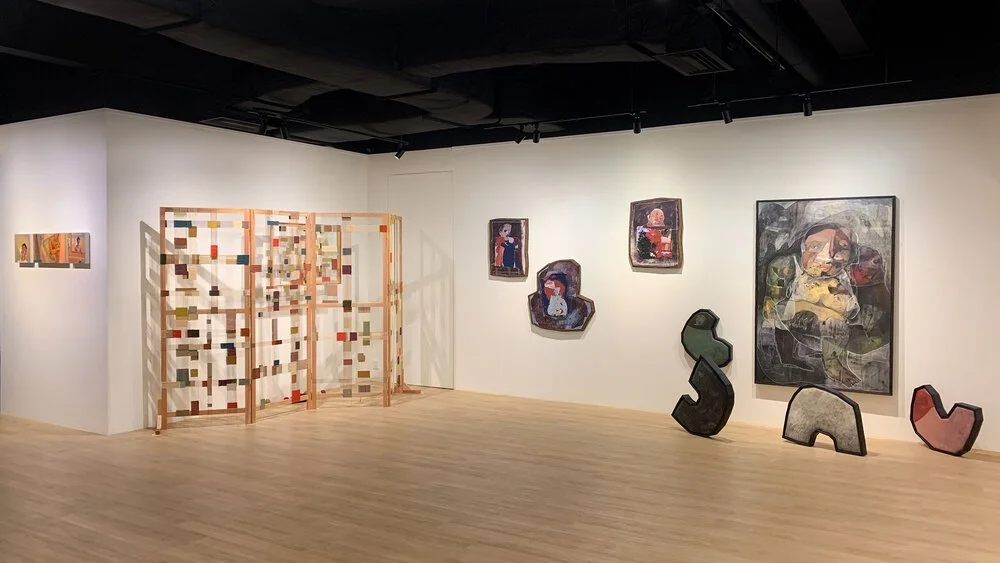Indonesian Third Culture Artists
‘Inside Out/ Outside In’ at Art Agenda, JKT
Ella Wijt, New View of a Future Dream, 2021, charcoal on raw canvas, 100 x 120cm. Image courtesy of Art Agenda, JKT.
Inside Out/ Outside In serves as an exhibition platform for Indonesian third culture artists: Kurt Peterson (b. 1982), Ruth Marbun (b. 1985), Sarita Ibnoe (b. 1989), Ella Wijt (b. 1990) and Joschua Setiawan (b. 1995) to explore and present their perspectives on questions of artistic identity, cultural authenticity and belonging. Inside Out/ Outside In hopes to deepen one’s understanding of contemporary Indonesian art, providing an exhibitionary space for those with an ‘international’ identity to respond to and elucidate their own understanding of the country’s art scene.
Joschua Setiawan, Self Portrait 1, 2021, oil on panel, 25.5 x 25.5cm. Image courtesy of Art Agenda, JKT.
The title Inside Out/ Outside In refers to the state of being in between cultures, environments and contexts; never completely belonging to any particular locale. It encapsulates the experience of “third culture” people; those who have grown up within a culture other than their parents' or the culture of their country of nationality, while also having lived in a different environment for a significant part of their developmental years. As globalisation and ease of travel have made way for a large increase in the number of ‘third culture’ persons, we likewise see an influx of “third culture” contemporary artists whose works reflect how locality can be negotiated through one’s state of mind rather than merely by physical contexts.
As such, concepts become more prominent within Indonesia’s artistic discourse, and the question of understanding these individuals within the context of the country’s contemporary art scene comes up inevitably: How is one’s multicultural identity reconciled within a contemporary art scene so heavily rooted in representational forms of cultural authenticity? In an Indonesian art practice often localised and informed by physical space, how can an individual without a defined sense of locality be able to “authentically” keep up with those brought up within a singular, Indonesian cultural origin?
“How is one’s multicultural identity reconciled within a contemporary art scene so heavily rooted in representational forms of cultural authenticity?”
Ruth Marbun, Sweet Martabak Granola, 2021, acrylic, pastel, and charcoal on canvas, dacron, variable dimensions. Image courtesy of Art Agenda, JKT.
Exile, displacement, and transition have often been thought of as being a primer for artistic creativity, growth and emancipation. Supposedly, it allows the artist to explore a greater variety of ideas and skills, and to free themselves from previous socio-cultural limitations found within their original contexts. Linda Nochlin, in her paper entitled Art and the Conditions of Exile: Men/Women, Emigration/Expatriation, states how shifting away from one’s home has been traditionally considered to be a hallmark of a successful artistic career; with many artists over the course of art history having spent extensive time abroad (e.g. Van Gogh in France and Raden Saleh in the Netherlands). Such statements ring true with many of the artists featured in ‘Inside Out/Outside In’, where time spent outside of their respective home country of Indonesia has become formative to their artistic growth.
Having spent extensive time in Singapore and the United States, mixed-media artist Ella Wijt feels most comfortable when moving in between different spaces of artistic production; working through an ever-changing range of mediums including painting, installation work, and sculpture. She often employs the use of organic materials that decay and distort over time. Her 2021 work entitled Metafora Fatamorgana depicts a space between differing worlds, cultures and mythologies; lacking a defined identity. To Ella, working in and depicting such a state of transiency has ironically become her locality, which is intangible, fleeting, and oftentimes very unfamiliar. Yet, to one who has constantly moved across different environments and cultures, it is quite an intimate feeling, and one that allows her to express the abstractions and complexities of her life.
Kurt David Peterson, installation view. Image courtesy of Art Agenda, JKT.
The highly personalised nature of third culture art is perhaps best exemplified in the work of Nebraska-born sound artist Kurt David Peterson. Through his auditory accumulations, Kurt attempts to encapsulate the sum of his experiences as an expatriate artist working within an unfamiliar culture. True to this, his work To Build the World Anew (2020) does not wholly resemble Indonesian or Westernised styles, and is instead a mix of sounds familiar within both cultures. They are highly personal, revealing parallels and peculiarities that those accustomed to either country may not see. Although these interpretations may not be completely steeped in our reality, they are what enables Kurt as an “outsider looking in” to interpret the complexities of Indonesian contemporary art.
Inside Out/ Outside In installation view. Image courtesy of Art Agenda, JKT.
In the end, there is no formula to unladening ‘third culture’ art. Rather, it should be seen as a spectrum of diverse experiences whose effects range in scale and complexity depending on the individual it impacts. ‘Inside Out/ Outside In’ is then an exhibition platform that attempts to visualise such a sphere and its effects on individuals as well as the larger Indonesian art scene. In doing so, it purports that physical locality or representation does not always define the cultural authenticity of a visual artist. Instead, the way in which one reacts towards one’s experience becomes an essential exercise in which to ground one’s sense of cultural and artistic identities. As the globalised, culturally saturated lifestyle of contemporary life becomes ever more pronounced, the perspective of those already living in between may prove to be essential to navigating these new spaces.
Inside Out/ Outside In is on show at Art Agenda, JKT from 6 to 30 October. More information here.

